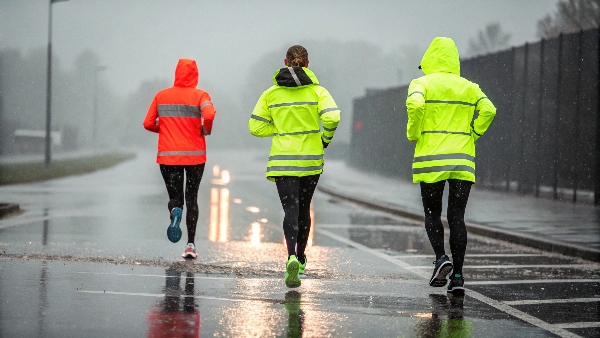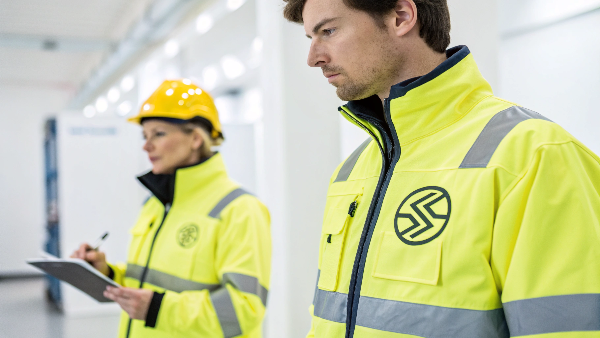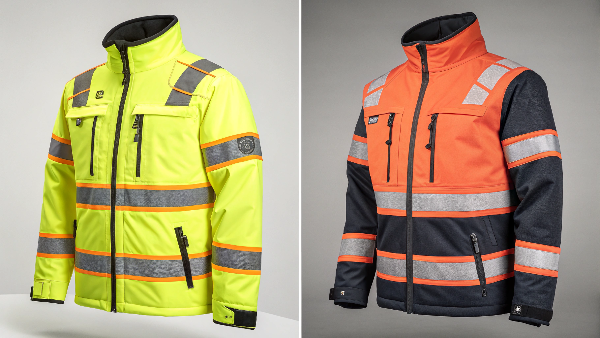Workplace hazards are a constant threat. Injuries can be severe, impacting lives and businesses. Safety apparel offers crucial protection against these dangers.
We require safety apparel, or Personal Protective Equipment (PPE), to shield workers from serious workplace hazards. These include chemical, physical, and electrical risks. Protective workwear acts as a vital barrier, minimizing exposure and preventing injuries or illnesses.
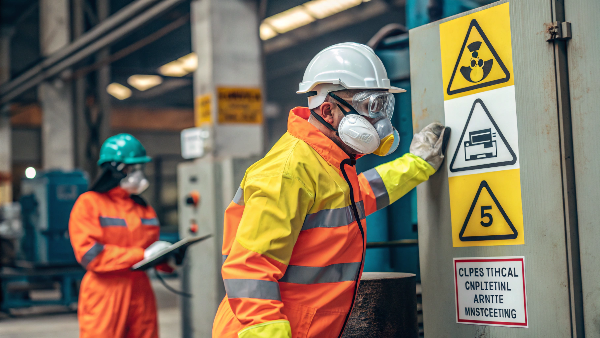
Understanding why safety apparel is necessary is the first step. But what exactly does this gear do, and why is it so important in our daily work lives? It's not just about rules; it's about well-being. Let's explore this further to see how it protects us and how we at Vissafety are committed to this cause.
What is the purpose of safety clothing?
Unsure about safety clothing's exact role? Misunderstanding can lead to improper use or neglect. Its purpose is clear: to prevent harm and keep you safe.
The primary purpose of safety clothing1 is to protect you from job-specific hazards. It acts as a shield against potential dangers like cuts, burns, chemical splashes, or low visibility, significantly reducing injury risks on site.

When we talk about safety clothing, we're discussing a critical line of defense. At Vissafety, where we've been manufacturing high-visibility and protective wear since 2007, we've seen firsthand how the right gear saves lives. The purpose isn't just about meeting regulations; it's about creating a genuinely safer work environment for everyone. Think about a construction worker. Their high-visibility vest2 isn't just a bright piece of fabric. Its purpose is to make them clearly seen by vehicle operators, especially in dim light or adverse weather, preventing tragic accidents. For a welder, flame-resistant clothing has the explicit purpose of preventing severe burns from sparks and molten metal. For someone handling chemicals, specialized suits are designed to stop hazardous materials from ever touching their skin. Each piece of safety apparel from our 200,000 sqm factory is designed with specific risks in mind, leveraging our industry-leading R&D lab with over 75 testing devices. We always emphasize to our B2B clients, like Danny Cheng who has trusted us for 12 years importing PPE for the North American market, that understanding the specific purpose helps in selecting the right PPE. This clarity ensures maximum protection and efficiency on the job. Our mission is to ship these good products to every corner of the world.
| Hazard Type | Example Safety Clothing | Core Purpose |
|---|---|---|
| Low Visibility | High-Visibility Vests, Jackets | Makes worker unmistakably visible to vehicle operators |
| Chemical Spills | Chemical-resistant Suits, Aprons | Prevents skin contact with harmful chemicals |
| Extreme Temperatures | Insulated or Cooling Garments | Protects from heat stress or cold-related injuries |
| Cuts & Abrasions | Cut-resistant Gloves, Sleeves | Shields skin from sharp objects and rough surfaces |
| Electrical Hazards | Insulated Gloves, Footwear | Prevents electrical shock |
Why is wearing safety gear important?
Still underestimating safety gear3's importance? Neglecting it can have devastating personal and financial consequences. Its importance cannot be overstated for worker well-being and operational success.
Wearing safety gear is important because it directly prevents injuries and saves lives. It’s your personal defense against workplace dangers, ensuring you go home safe every day. It also helps businesses avoid costly accidents.
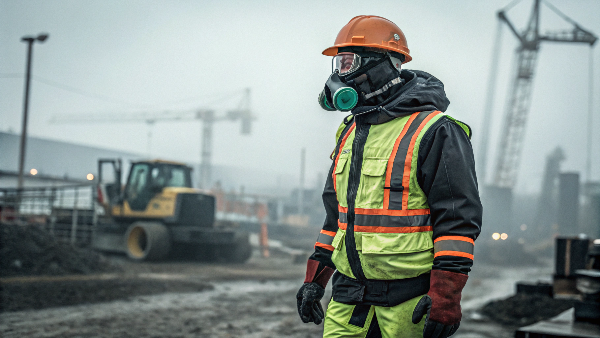
The importance of wearing safety gear extends far beyond just individual protection; it cultivates a pervasive culture of safety within an entire organization. When everyone consistently uses the right PPE4, it sends a clear message: worker well-being is a top priority. I remember when Danny Cheng, our long-term client from California, shared a story about one of his major logistics clients. They observed a significant and measurable drop in minor injuries after implementing a stricter policy on high-visibility wear5 throughout their warehouses and loading docks. This improvement wasn't just about ticking a compliance box; it was about workers feeling genuinely valued and protected by their employer. This, in turn, can boost morale, reduce anxiety, and surprisingly, even increase productivity. For us at Vissafety, ensuring our apparel meets stringent global standards like EN ISO 20471 and ANSI/ISEA 107 is absolutely paramount because we deeply understand this importance. It's not just fabric and thread we are selling; it's a commitment to safety, backed by our triple inspection quality assurance. The cost of an accident – considering medical bills, lost work time, potential fines, and reputational damage – far outweighs the investment in quality, reliable safety gear from a trusted manufacturer like us.
Why do we need to wear safety vest?
Wondering about the specific need for safety vests? Ignoring them in relevant environments dramatically increases risk of not being seen. They are vital for visibility and accident prevention.
We need to wear safety vests, especially high-visibility ones, primarily to be easily seen by others. This is crucial in areas with moving vehicles or equipment, preventing collisions and serious accidents, day or night.
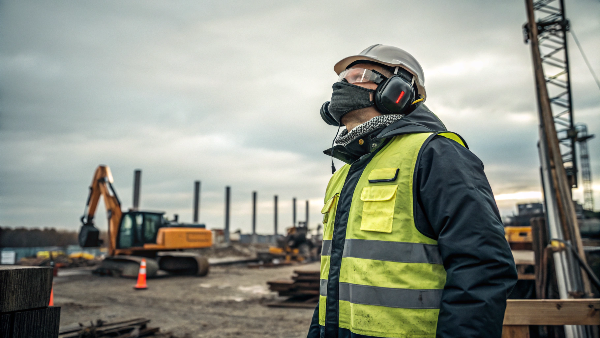
Safety vests, particularly the high-visibility ones we specialize in at Vissafety, are one of the most common and demonstrably effective pieces of Personal Protective Equipment. Their main job, their core function, is to make you stand out. Think about inherently dynamic and often hazardous environments: busy construction sites with heavy machinery, roadside work zones with fast-moving traffic, or sprawling warehouses bustling with forklift activity. In these places, a worker can easily blend into the complex background, especially during dawn, dusk, or in poor weather. A bright, reflective vest essentially screams, "I am here!" This is particularly true in low light, fog, or rain, where visibility is naturally compromised. We produce millions of safety vests annually, and we know from extensive testing in our advanced labs that features like high-quality retroreflective tape, which shines brightly when hit by vehicle headlights or other light sources, are genuine lifesavers. Danny Cheng often emphasizes the critical need for ANSI/ISEA 107 compliant vests for his North American clients because those standards meticulously specify brightness levels, fluorescent color requirements, and minimum areas of reflective material. It's not just about being bright; it's about being seen effectively and quickly by operators of moving machinery, giving them crucial time to react. Many of our vests also offer additional practical features like multiple pockets for tools, clear ID badges, or even breakaway designs for added safety around moving parts, adding functionality to their primary safety role. Our quick delivery ensures that companies can rapidly equip their teams.
Common Scenarios Requiring Safety Vests:
- Road construction and maintenance crews
- Building construction sites with vehicle traffic
- Warehouses and loading dock operations
- Emergency response personnel (police, fire, EMS)
- Airport ground crew and baggage handlers
- Event staff and parking attendants in busy areas
- School crossing guards
Why do we wear protective clothing?
Protective clothing seems like just another layer to some? Treating it as optional invites entirely avoidable workplace injuries. It's a specific, engineered barrier against identified hazards.
We wear protective clothing to shield our bodies from specific workplace hazards6 that regular clothes cannot handle. This includes protection from chemicals, extreme heat or cold, biological agents, or sharp objects, minimizing injury.
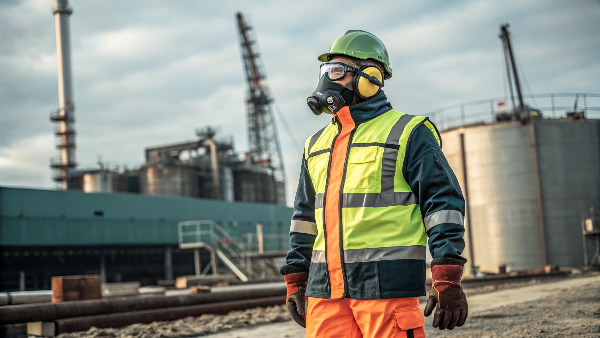
Protective clothing goes well beyond just high-visibility vests; it encompasses a vast and diverse range of garments, each meticulously designed to offer protection against specific, identified dangers. The fundamental reason we wear it is quite simple: our everyday clothes, like jeans and t-shirts, offer little to no defense against many common industrial and workplace hazards. For example, at Vissafety, we manufacture a variety of coveralls that protect workers' entire bodies against dust, dirt, grime, light liquid splashes, and other particulates that could irritate the skin or contaminate products. For workers in chemical plants or laboratories, specialized suits7 made from advanced non-porous materials are absolutely essential to prevent skin contact with corrosive or toxic substances. Firefighters wear multi-layered, flame-resistant gear engineered to withstand extreme heat and open flames. Even in less overtly dangerous environments, like food processing facilities, protective clothing such as aprons, hairnets, and sleeve covers prevents contamination of the product, ensuring consumer safety. The absolute key is carefully matching the specific type of protective clothing to the particular hazard present. We often collaborate closely with B2B clients like Danny Cheng to develop specialized items, such as the lightweight, breathable safety jackets for workers in high-temperature environments that we co-launched. This collaborative approach ensures that the protective clothing is not only effective but also comfortable and practical enough to be worn correctly for extended periods, promoting compliance and safety. It's about creating a reliable barrier where one is critically needed, and our flexible MOQ allows for such custom solutions.
What are the reasons for wearing clothes protection?
Still seeking more reasons for clothes protection beyond the obvious? Overlooking these diverse reasons can compromise overall safety efforts and lead to gaps. The reasons are varied, all aiming at worker safety.
The reasons for wearing clothes protection are to prevent direct contact with hazards, reduce injury severity if an accident occurs, comply with safety regulations, and maintain hygiene in certain industries.
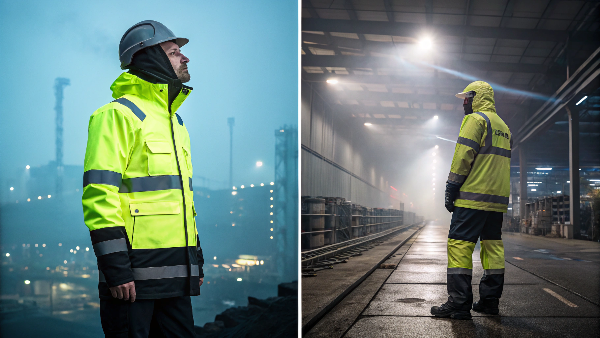
There are many compelling and logical reasons to wear appropriate clothes protection in the workplace, and they all ultimately boil down to the fundamental goal of keeping workers safe, healthy, and productive. Firstly, and most critically, it's about prevention. Protective clothing acts as an essential physical barrier between the worker and immediate, tangible threats such as chemical splashes, flying debris, sharp objects, molten metal, or extreme temperatures. This is the first line of defense. Secondly, it's about mitigation. In the unfortunate event that an accident does happen, the right gear can significantly reduce the severity of an injury. For instance, a cut-resistant sleeve might mean the difference between a deep, debilitating gash requiring surgery and a minor scratch. Thirdly, compliance with legal and industry standards is a major factor. Regulatory bodies like OSHA in the US, or similar health and safety authorities worldwide, mandate the use of specific PPE for certain tasks and industries. As a responsible manufacturer, we ensure our products, such as those meeting EN ISO 20471 or ANSI/ISEA 107, help companies meet these crucial legal obligations and avoid penalties. Fourthly, the consistent use of proper gear actively promotes a strong safety culture. When appropriate protective clothing is provided, maintained, and its use enforced, it reinforces the powerful message that worker safety is a genuine priority for the company. Lastly, in many industries, particularly food service, healthcare, and cleanroom environments, protective clothing is absolutely vital for hygiene and preventing cross-contamination, protecting both products and people. These multifaceted reasons underscore why clothes protection is a non-negotiable aspect of many modern jobs.
What are the consequences of not wearing PPE?
Think skipping PPE is no big deal, just a minor shortcut? The consequences can be severe, ranging from painful injury to significant legal and financial issues. Understanding these outcomes highlights PPE's necessity.
Not wearing PPE can lead to serious injuries, illnesses, or even fatalities. Consequences also include hefty fines for companies, legal liabilities, lost productivity, and a damaged reputation. It's simply not worth the risk.
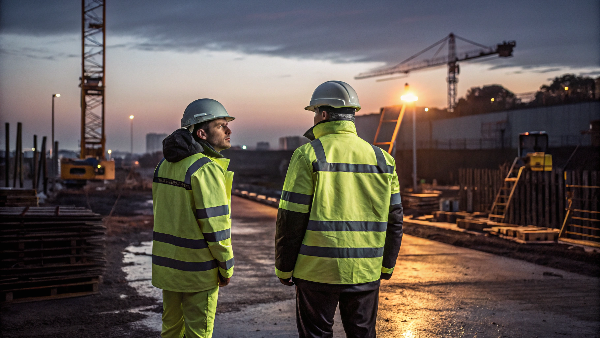
The consequences of failing to wear required Personal Protective Equipment (PPE), or wearing inadequate or damaged PPE, can be far-reaching and devastating for everyone involved. For the individual worker, the direct impact can range from relatively minor cuts, bruises, and abrasions to severe outcomes like chemical burns, respiratory illnesses from inhaled toxins, permanent disabilities such as loss of sight or hearing, or tragically, death. I recall Danny Cheng mentioning a significant financial loss his business faced years ago due to a batch color inconsistency from a previous supplier, which led to a $500k recall; imagine if that faulty gear had resulted in widespread worker injuries – the human cost is immeasurable. Beyond the direct impact on the worker, the company faces a cascade of serious repercussions. These can be categorized as follows:
| Consequence Category | Specific Examples |
|---|---|
| Legal & Financial | Heavy fines and citations from regulatory bodies (e.g., OSHA, HSE) |
| Increased insurance premiums, substantial workers' compensation claim costs | |
| Potential for costly civil lawsuits from injured employees or their families | |
| Operational | Work stoppages during investigations, significant project delays |
| Lost productivity due to absent workers, costs of retraining replacements | |
| Damage to expensive equipment or facilities as a result of accidents | |
| Reputational | Severe damage to the company's public image and brand |
| Loss of client trust and potential contracts | |
| Difficulty in attracting and retaining skilled employees due to safety concerns | |
| Human Cost | Employee injury, chronic illness, permanent disability, or fatality |
| Decreased morale among the workforce, psychological impact on colleagues |
At Vissafety, our rigorous triple inspection process (pre-production, in-process, and final) is specifically designed to prevent faulty or non-compliant products from ever reaching the market, because we understand these severe consequences intimately. The relatively small investment in high-quality, certified PPE pales in insignificant comparison to the potentially catastrophic fallout from neglecting this fundamental aspect of workplace safety.
Why is protective clothing important and its maintenance?
Know it's important, but what about the upkeep of this gear? Neglected or damaged gear loses its effectiveness, creating a false sense of security. Proper maintenance is absolutely key to sustained protection.
Protective clothing is vital for blocking hazards. Its maintenance—cleaning, inspection, and proper storage—is equally important to ensure it remains effective and continues to provide the intended protection throughout its lifespan.
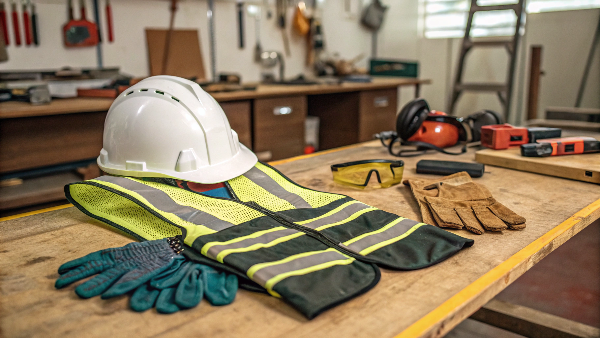
We've thoroughly established why protective clothing is so incredibly important – it's your essential barrier against a multitude of workplace dangers. However, that critical barrier is only as strong and reliable as its current condition. This is precisely where diligent maintenance comes into play. Consider this: if a high-visibility vest, designed to make a worker conspicuous, is caked in dirt, grime, or grease, its reflectivity and fluorescence are significantly compromised, making the wearer harder to see. If a chemical-resistant glove has even a small, unnoticed tear, it becomes worse than useless; it can trap hazardous substances against the skin. Regular, thorough inspection before each use is crucial. Workers should be trained to look for rips, tears, holes, worn or frayed areas, chemical damage, or any signs of contamination. Cleaning procedures are also vital. Some specialized garments, like the flame-resistant clothing we can produce, require very specific cleaning methods to maintain their protective properties – for instance, certain detergents or washing temperatures can degrade their effectiveness. We always provide detailed care instructions with our Vissafety apparel because proper care ensures longevity and performance. Proper storage is another often-overlooked aspect; leaving protective gear in direct sunlight for extended periods, or in environments with extreme temperatures or humidity, can degrade materials over time. Training employees on how to correctly inspect, clean, store, and ultimately identify when PPE needs repair or replacement is just as important as providing it in the first place. It ensures the initial investment in safety continues to pay dividends by keeping the gear fully functional and reliable. Our quality materials contribute to durability, but user care is paramount.
Key Maintenance Steps:
- Inspect Before Each Use: Diligently check for any damage, wear, tear, and overall cleanliness.
- Clean Regularly & Correctly: Always follow the manufacturer's specific instructions for washing and decontamination.
- Store Properly: Keep gear in a clean, dry place away from extreme temperatures, moisture, direct sunlight, and chemicals.
- Repair or Replace Promptly: Address any damage immediately. Never use compromised or faulty gear.
What is the 5 importance of PPE?
Need a quick, clear summary of PPE's core importance for a toolbox talk or training? Forgetting these key points can weaken safety focus and understanding. Here are five critical reasons for its use.
The five key importances of PPE are: 1. Prevents injuries/illnesses. 2. Reduces hazard exposure. 3. Ensures legal compliance. 4. Promotes a safety culture. 5. Can improve worker productivity and morale.

When we at Vissafety discuss the fundamental importance of Personal Protective Equipment (PPE) with our B2B clients, including large corporate buyers and distributors, we often break it down into several key, undeniable benefits. Here are five fundamental reasons why PPE is absolutely indispensable in a vast array of modern workplaces, forming the pillars of a sound safety program:
- Direct Injury and Illness Prevention8: This is, without a doubt, the primary and most crucial goal. PPE acts as a direct physical barrier between the worker and various workplace hazards. This significantly reduces the likelihood of cuts, burns, impacts, chemical exposure, inhalation of harmful substances, and other occupational injuries or illnesses that can have life-altering consequences.
- Hazard Exposure Reduction: While the hierarchy of controls prioritizes eliminating or reducing hazards at their source through engineering solutions and safe work practices, PPE serves as the essential last line of defense. It minimizes any residual exposure that cannot be completely engineered out, protecting the worker when other controls are insufficient.
- Ensuring Legal and Regulatory Compliance9: Health and safety authorities across the globe, such as OSHA in the United States or the Health and Safety Executive (HSE) in the UK, mandate the use of specific PPE for particular tasks and within certain industries. Using appropriate, certified PPE (like our Vissafety gear that meets EN ISO 20471 or ANSI/ISEA 107 standards) ensures businesses meet these vital legal obligations, thereby avoiding hefty fines, legal action, and operational shutdowns.
- Fostering a Positive Safety Culture10: The act of providing high-quality PPE and consistently enforcing its correct use clearly demonstrates a company's genuine commitment to the well-being of its employees. This visible commitment can significantly improve morale, as employees feel valued, respected, and protected, leading to a stronger, more proactive overall safety culture throughout the organization.
- Maintaining and Potentially Improving Productivity: By effectively preventing accidents, injuries, and work-related illnesses, PPE helps to avoid lost workdays, reduce staff turnover due to injury, and minimize disruptions to operations. Workers who feel safe and secure in their environment are often more focused, confident, and efficient in their tasks. As our experienced client Danny Cheng often rightly says, "A safe workforce is a productive workforce."
What are the benefits of using protective gear give 5 examples?
Looking for concrete, real-world benefits of using protective gear? Abstract understanding isn't nearly as compelling or memorable as tangible, relatable examples. Here are five clear advantages with specific scenarios.
Benefits include: 1. Reduced injuries (e.g., hard hat prevents head trauma). 2. Lower costs (e.g., safety glasses prevent eye surgery bills). 3. Better compliance. 4. Improved morale. 5. Enhanced visibility (e.g., hi-vis vest).
[image placeholder]
The benefits of consistently and correctly using appropriate protective gear are numerous and deliver direct, measurable positive impacts for both employees and their employers. Let's look at five clear, illustrative examples of how PPE makes a difference:
- Preventing Severe Head Injuries with Hard Hats:
- Benefit: Avoids potentially life-threatening traumatic brain injuries, concussions, skull fractures, or serious scalp lacerations.
- Example: A construction worker is on a busy site. A wrench accidentally dropped from a scaffold above glances off their hard hat. Instead of a severe or fatal head injury, the worker is shaken but unharmed. This is a common risk our clients in construction, like those Danny Cheng diligently supplies in North America, prepare for by insisting on ANSI-compliant head protection.
- Protecting Precious Eyesight with Safety Glasses/Goggles:
- Benefit: Saves vision from impacts by flying debris, splashes from hazardous chemicals, or harmful optical radiation (e.g., welding).
- Example: A machinist operating a lathe wears safety glasses. A small, sharp metal shard flies off the workpiece at high speed but is deflected by the impact-resistant lens, preventing a serious eye injury, potential blindness, and extensive medical treatment.
- Ensuring Worker Visibility and Preventing Collisions with High-Visibility Apparel:
- Benefit: Makes workers easily and quickly seen by operators of moving vehicles or heavy machinery, especially in low light or complex environments.
- Example: A road crew member, part of a team resurfacing a highway at dusk, wears a Vissafety high-visibility vest (fully compliant with ANSI/ISEA 107 standards). The vest’s bright fluorescent material and retroreflective stripes make them clearly visible to an approaching truck driver in the fading light and light rain, allowing the driver ample time to slow down and navigate safely, averting a potential tragedy. Our fast delivery and robust supply chain ensure these critical garments are always available.
- Avoiding Skin Damage and Systemic Poisoning from Chemicals with Resistant Gloves/Suits:
- Benefit: Prevents painful chemical burns, allergic reactions, dermatitis, and the absorption of toxic substances through the skin which can cause long-term health issues.
- Example: A laboratory technician carefully handling corrosive acids wears appropriate chemical-resistant gloves and an apron. During the transfer of a substance, a small, unexpected splash occurs, but the protective apparel completely blocks the chemical, leaving their skin untouched and unharmed.
- Reducing Respiratory Problems and Lung Diseases with Respirators:
- Benefit: Protects the delicate tissues of the lungs from harmful dusts (like silica or asbestos), toxic fumes, solvent vapors, mists, or airborne infectious agents.
- Example: A worker involved in sanding old paint containing lead uses a properly fitted respirator with the correct particulate filters. This prevents the inhalation of hazardous lead dust, safeguarding them from potential lead poisoning and chronic respiratory diseases later in life.
These tangible examples powerfully highlight how our Vissafety products, backed by quality guarantees and international certifications, directly contribute to creating a significantly safer and healthier working environment for people across diverse industries globally, aligning with our mission.
Conclusion
Safety apparel is absolutely essential. It protects workers from harm, ensures companies meet legal compliance, and supports a safer, more productive workplace for everyone. Prioritize it always.
-
Understanding the importance of safety clothing can help ensure proper use and enhance workplace safety. ↩
-
Explore how high-visibility vests significantly reduce accident risks for construction workers in low-light conditions. ↩
-
Explore this link to understand how safety gear can protect workers and enhance workplace safety culture. ↩
-
Learn about the critical role of PPE in preventing injuries and ensuring a safe working environment. ↩
-
Discover how high-visibility wear can significantly reduce accidents and improve worker safety in logistics environments. ↩
-
This resource will provide insights into various workplace hazards and the importance of protective gear in mitigating risks. ↩
-
Learn about the different types of specialized suits designed for chemical protection and their importance in safety protocols. ↩
-
Understanding the benefits of direct injury and illness prevention can enhance workplace safety and reduce risks. ↩
-
Exploring legal requirements for PPE helps ensure compliance and avoid penalties, safeguarding your business. ↩
-
Discover how a positive safety culture can enhance employee morale and overall safety in the workplace. ↩

